Welcome to those news stories that crossed our desk and which collectively prompted us to smile, sometimes laugh or even draw in a sharp breath or two. If there are stories you would like to share with a wider audience feel free to send through them through to journal@daimani.com
1. Phew, at least that’s sorted
With so many issues to be concerned about during this Live Event lockdown, at least today The DAIMANI Journal can bring you news of one less thing to be worried about. L’Academie française – the guardian of all things to do with the French language – has spoken and now, for certain, with 100 percent confidence, in French, the virus is feminine.
Being feminine means that Covid-19 can only be used with the article ‘la’ not ‘le’ - according to the official guardian of the French language. L’Academie’s ruling is significant because almost all media coverage in France to date has used the commonplace reference as masculine, as the umbrella term for the virus type - coronavirus - is masculine in French.
‘The use of the feminine for Covid-19 would be preferable,’ l’Academie said in a directive published on its website under the category ‘faulty use’.
Here’s how things went wrong: the use of the masculine ‘le Covid-19’ came about because of the incorrect attribution to the same gender as the germ that causes it: ‘le’ coronavirus.
But in fact the term Covid is nothing more than an acronym for coronavirus disease. That means, in French, the core word in an acronym is what signals the gender. In this case, disease, which is the feminine ‘la maladie’ in the language of Moliere. [Similarly the French speak of ‘la’ CIA (the Central Intelligence Agency) because in French, ‘agence’ is a feminine word.]
L’Academie’s ruling should now close off all further discussions on this point. The World Health Organisation already refers to Covid-19 as ‘la’, and in Canada, Prime Minister Justin Trudeau, all government websites and the media use the feminine form, as does the Canadian ‘Office quebecois de la langue francaise’. The Royal Spanish Academy has issued similar guidance, citing the same grammar rationale.
Reporting this, Le Figaro noted sympathetically that l’Academie still had two thorny issues to work through:
‘De la même façon, l'Académie ne goûte guère l'expression «assez peu heureuse», selon elle, de «distanciation sociale», une transcription de l'anglais «social distancing». «Distanciation», explique l'Académie, désigne dans son sens premier «le refus de se mêler à d'autres classes sociales». «On suppose pourtant que ce n'est pas le sens que l'on veut donner aujourd'hui à ce nom», ironise l'Académie.
«Peut-être aurait-on pu parler de respect des distances de sécurité, de distance physique ou de mise en place de distances de sécurité», suggère l'Académie.
‘On attend que l'Académie se penche désormais sur le mot «déconfinement»... absent de tous les dictionnaires.’
‘In the same way, the Academy describes itself as being "not very happy" with the expression "social distancing", a transcription of the English "social distancing". "Distancing", explains the Academy, means in its primary sense "the refusal to mix with other social classes". "We suppose, however, that this is not the meaning we want to give today to this name," quipped the Academy.
‘"Perhaps we could have talked about respecting safety distances, physical distance or setting up safe distances," suggests the Academy.
‘We are waiting for the Academy to now focus on the word "deconfinement" [The name for the French Government’s plan to exit the Lockdown] ... which is absent from all dictionaries.’
2. Coachella is back in a legal bog over ‘territorial exclusivity’
As Coachella [full name: Coachella Valley Music and Arts Festival, at the Empire Polo Club grounds near Palm Springs, California] has grown and grown it has come to occupy the last three weekends of April as the event’s traditional calendar date.
Obviously the coronavirus Live Event lockdown put paid to April 2020, and Coachella has been tentatively rescheduled to October this year. [DAIMANI offered official VIP Hospitality packages to the April 2020 Coachella and will again once the rescheduled date is 100% confirmed].
‘It’s all about that inane desire to be an A-lister. It’s nestled deep inside us, emerging sometimes only when actually experienced.’
As if all of the rescheduling and reorganisation was not enough of a burden, the promoters behind Coachella, the AEG-owned company Goldenvoice had something of a significant legal reverse last week.
First the background: Artists booked to play Coachella typically sign agreements that forbid them from performing at any other North American festival from December 15 through May 1. Fees paid to artists vary widely but for headline acts can top US$ 5m.
That was too much for Oregon-based promoter Soul’d Out Productions who claimed that Coachella’s radius clause constituted ‘tortious interference and unlawful competition’. Soul’d Out claimed that artists including SZA and Daniel Caesar [both pictured] were forced to turn down appearances at their festival due to the clause.

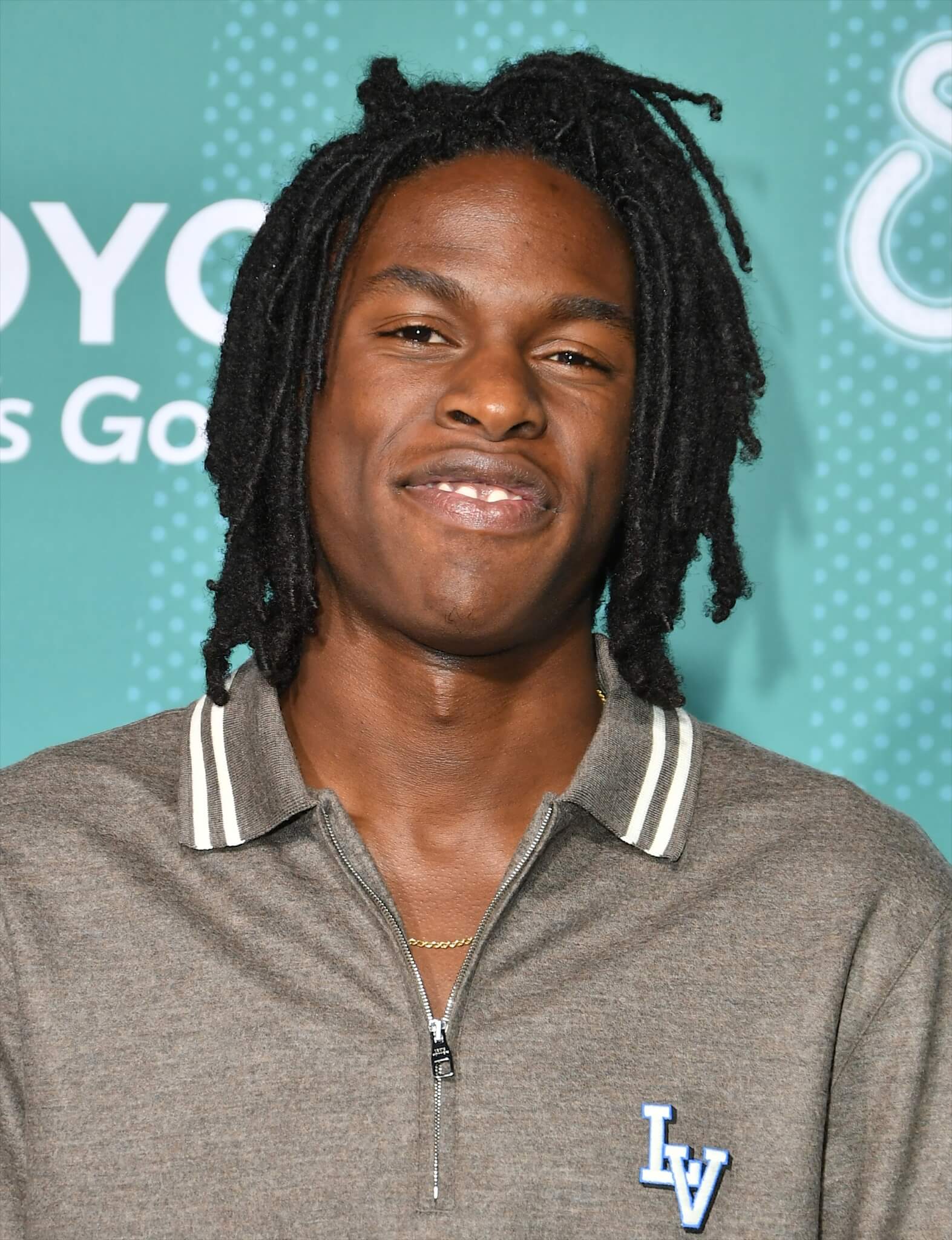
In March 2019, a federal judge had dismissed Soul’d Out’s original lawsuit – on the basis that Soul’d Out weren’t a party to Coachella artist contracts so had a lack of ‘legal standing’. This was an obvious win for Coachella and promoter Goldenvoice. But last week, on appeal, the U.S. Ninth Circuit Court of Appeals reversed that judge’s dismissal.
According to music site Pitchfork.com, ‘the court expressed no opinion as to whether Soul’d Out was entitled to relief, were the promoter to successfully litigate the suit in District Court’.
However the court’s decision could have a huge impact right across the live music business, where these sorts of ‘territorial exclusivity’ concepts in artist contracts are commonplace. We won’t know if Soul’d Out Productions will proceed which means filing for a rehearing. They have 14 days to act.
3. Vale Arthur Summons [1935-2020]
Arthur Summons, who died this past weekend aged 84, was perhaps the greatest little man to ever play the bruising sport of rugby league in Australia. In 1963 he was captain of Western Suburbs who were playing rugby league’s Grand Final against St George. Torrential rain the night before meant that almost from kickoff the surface of the Sydney Cricket Ground became hopelessly churned up.
Summons’ team lost that Grand Final 8-3 but in the seconds after the full-time whistle something momentous happened. St George’s captain, the towering Norm Provan, consoled Summons. The incongruity of the giant and the little man made for a brilliant photograph, captured by John O’Gready.
Australia’s National Portrait Gallery has a print of the photo, dubbed ‘The Gladiators’, because of its significance in the country’s consciousness. This is part of the dedication:
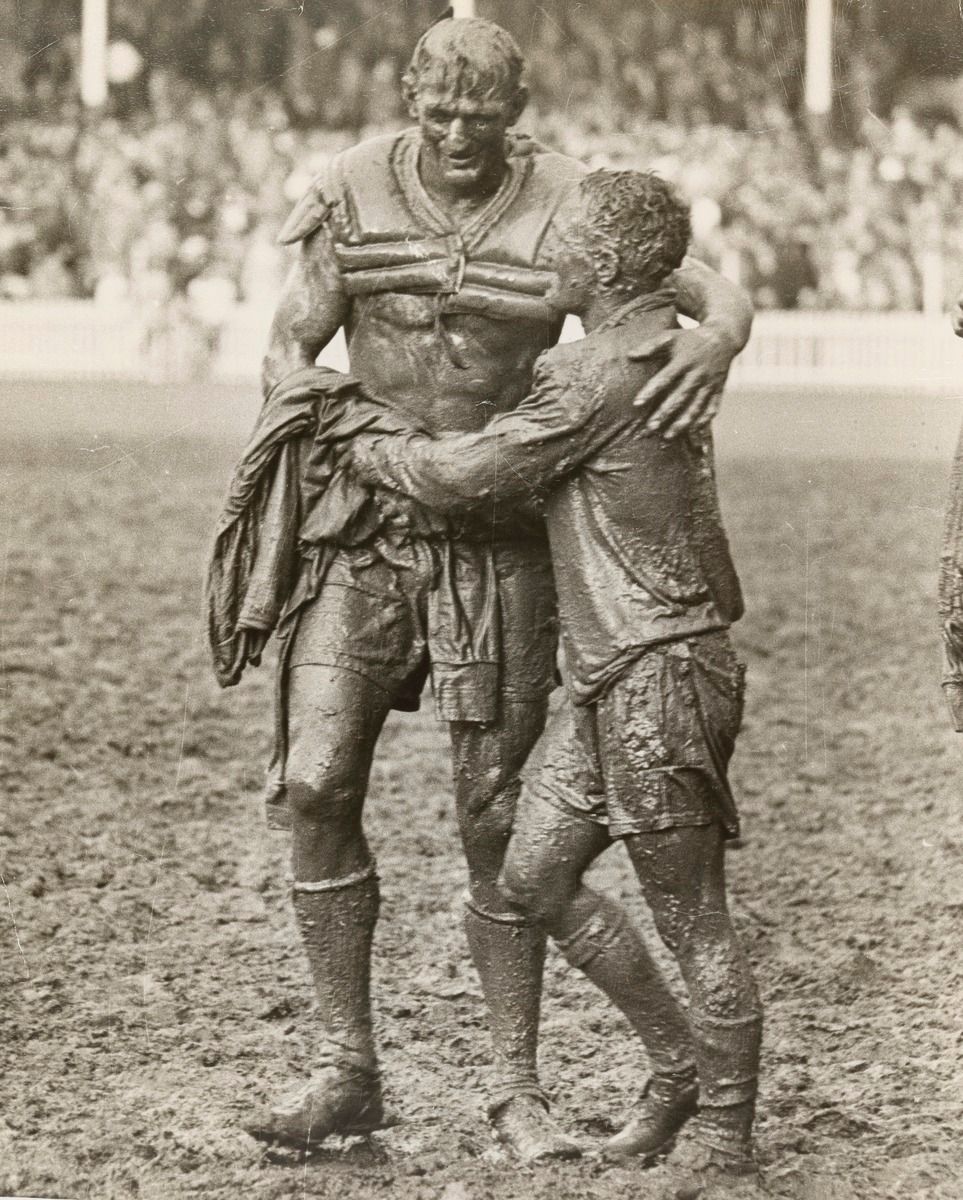
‘It was hard to tell who was who in the black and white photograph below the headline ‘Who’s that?’ in the Sun Herald for 25 August 1963.
‘Two figures, walking arm in arm, could be discerned but little else. Clearly one was very tall, the other short. Any further differentiation was problematic as both men were covered in a dark blanket of mud that blurred their features and obscured details of their clothing.
‘It was not immediately apparent who had won the hard fought game; such was the appearance of friendship between the two players captured in that magic post-game moment by staff photographer John O’Gready (1937-1999). The image caught the imagination of the public who read into it the mateship and sportsmanship that could exist between two hardened but still chivalrous warriors. The idea of a level playing field also appealed to readers who saw mutual respect between equals – the big man and the small – in Australian sport and by extension, in Australian society.’
And that was pretty much that until 1982 when the forerunners of today’s National Rugby League were looking to create a new trophy that heralded a lucrative tobacco sponsorship deal that created the Winfield Cup.
In a delicious irony it was a former rugby union player, not rugby league, Wallabies flanker Gary Pearse whose marketing company was tasked with searching for trophy ideas.
‘We had the Super Bowl kind of idea. We considered maybe a cup, because it was called the Winfield Cup. We looked at all these things and we were going nowhere, and then I thought I will just go back into the past of rugby league.’
‘And I saw the [Gladiators] photo and thought if we can bring this to life it’s perfect.’
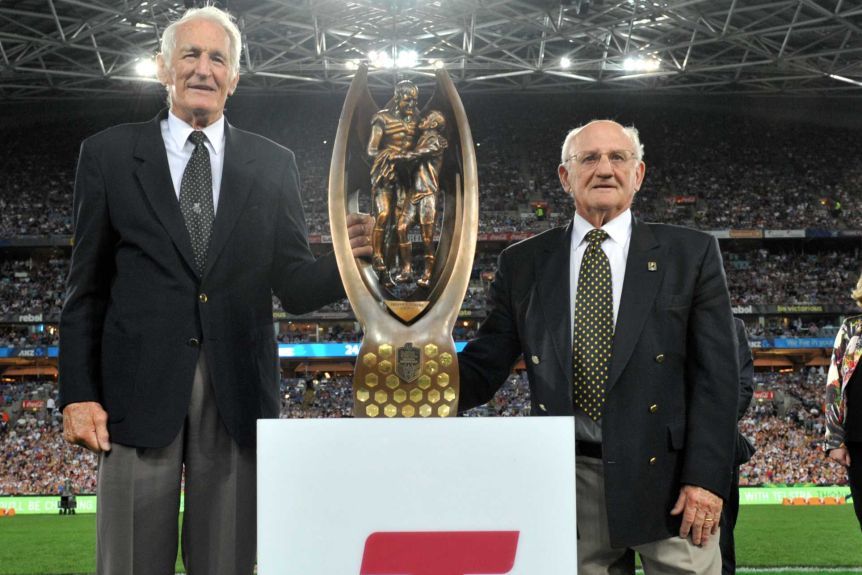
The 1982 version of the trophy took six weeks to design and sculpt, before being unveiled ahead of the Grand Final decider between arch-rivals Parramatta and Manly.
Pearce said the O’Gready image spoke volumes: ‘It says a lot of things. It says resolution of conflict. It says big man small man, it says rich clubs and poor clubs. And in many ways it encapsulated the deep culture of the sport.’
Cigarette sponsorship was eventually forbidden in 1994; two years later the trophy went from having a hollow base to having a football shaped background when it was adopted by Optus for their sponsorship. And in 1998 the NRL gave it the look it has today when the competition was unified after the Super League war.
4. Hong Kong Ballet … still waiting on tippy-toes
This is the official notice on the Hong Kong Ballet’s website, with regard their staging of Romeo + Juliet, scheduled for the first weekend of next month.
‘Hong Kong Ballet continues to monitor current circumstances as a result of the COVID-19 pandemic. While our production of Romeo + Juliet is still scheduled to premiere in June 2020, should the situation require us to postpone the premiere, we will reschedule the premiere for a later date in the coming months. We will notify all ticket holders and the general public of any changes to our schedule.’
This is how the Hong Kong Ballet are marketing their retelling of the classic with an Asian twist, thanks to artistic director Septime Webre, who led the Washington Ballet and American Repertory Ballet for more than twenty years before moving to Hong Kong in 2017:
‘Warring triad families. Passion and tragedy. The famous balcony scene. Shakespeare’s timeless tale of star-crossed lovers has captivated audiences for generations and is given a fresh and thought-provoking retelling in Septime Webre’s new Romeo + Juliet. Set in 1960s Hong Kong, this epic love story captivates with emotionally searing dancing, family drama, sumptuous cheongsams and iconic scenes from the tragic tale. With Webre’s original choreography accompanied by Prokofiev’s dramatic score, this brilliantly imagined adaptation is especially relevant for contemporary audiences as it fuses dance and drama against a backdrop of complicated politics and social upheaval.’
And if you want a sense of the magic Webre is bringing to Hong Kong Ballet consider this brilliant urban-staging of Ravel’s Bolero to celebrate the company’s 40th anniversary season last year.
5. Last Dance documentary pumps up many things
There are surely many reasons why Michael Jordan collaborated with the producers of the 10-part series Last Dance which finished over the past weekend. Even though money was surely not one of them, the value of ‘relaunching’ the Jordan brand into today’s NBA discussion could be seen in one simple fact: a game-worn pair of Nike sneakers from Michael Jordan’s 1980s playing days sold for a record US$ 560,000 last Sunday — almost four times the initial estimate.
This is how the lot was displayed on the Sotheby’s site along with the final closing price.
Bidding for the ‘Air Jordan 1s,’ which were custom-made for the Hall of Famer in sizes 13 and 13 1/2 in the Chicago Bulls colours, started more than a week ago in New York. As well as being sports memorabilia in their own right, the Air Jordan 1s have a significant place in sports marketing history.
In 1984, Michael Jordan’s black and red shoes (called ‘Air Ships’) earned notoriety after the NBA sent a letter to Nike in February 1985 saying their Jordan shoes were a violation of the league’s uniformity of uniform clause, and forbidding Jordan from wearing them.
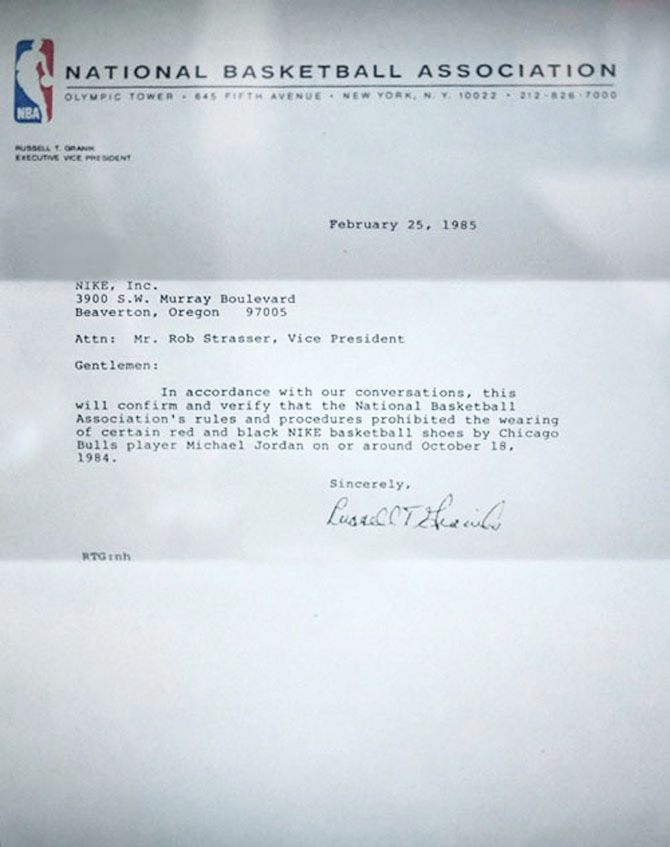
Nike’s response was to create an ad campaign around Jordan’s banned shoes, remarking that while ‘the NBA threw them out of the game, fortunately, the NBA can’t stop you from wearing them.’ The Air Jordan 1s were created immediately following the famous ‘banned’ Nike ad campaign, and established Jordan as the league's leader in shoe style.
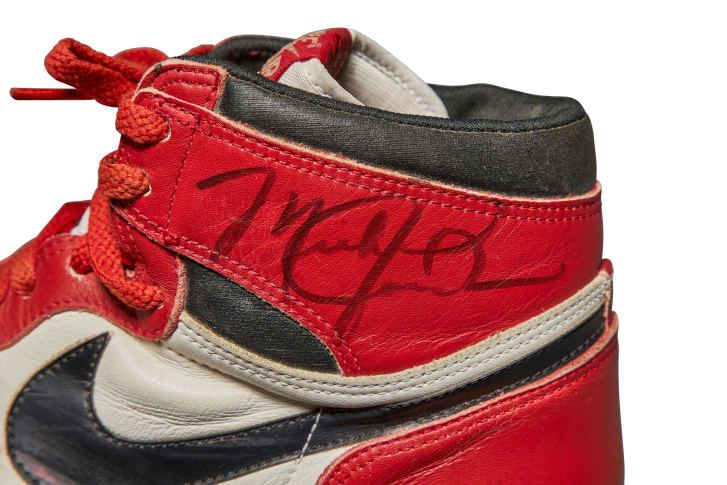
A press release from Sotheby’s detailed who was bidding: ‘Following a bidding war which drove the value up by US $300,000 within the final twenty minutes of the sale [DAIMANI’s emphasis], the pair achieved more than 3.5 x their US$ 150,000 high estimate. Bidders ranging from age 19 to 50+ participated across 4 continents, with 70% of bidders new to Sotheby’s.’ It’s understood that there were a total of 10 bidders from six different countries.
Sotheby’s held the previous record for sneakers at auction – also made by Nike - with US$ 437,500 paid for Nike’s ‘Moon Shoe’ last year. The Moon Shoe’s claim to fame was that it was the first to feature Nike's original innovation the Waffle Sole, created by Bill Bowerman using, literally, his wife's Waffle Iron. Bowerman was the co-founder of Nike.
The ‘Air Jordan 1s’ came from the collection of Jordan Geller, a collector and founder of the Shoezeum, the world’s first sneaker museum, Sotheby’s said.
Jordan is once again the most famous basketball player in the world following the release of ‘The Last Dance,’ the ESPN documentary series, also distributed outside North America by Netflix. The 10-part series chronicle focuses on his career and how the Chicago Bulls chased their sixth NBA championship during the 1997-98 season.


